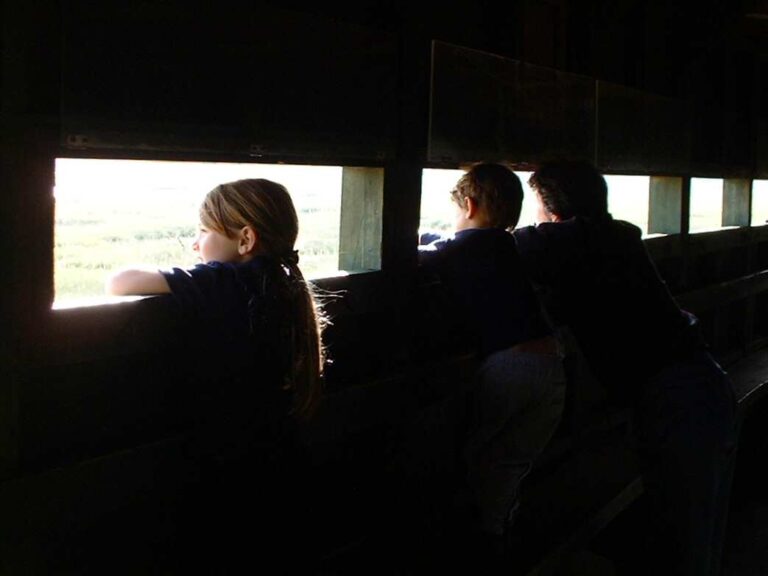Do Bird Baths Need To Be Elevated? (ANSWERED! + Table)
We’re reader-supported; we may earn a commission from links in this article.
If you’re like me, sitting facing my backyard and thinking to myself: ‘should I elevate my bird bath?’ Then you’re in luck! I did a ton of research on this topic and found an answer. Here’s what I found:
Bird baths do need to be elevated. This is to keep them out of reach from cats and other predators. Bird baths need to be elevated about 2 – 3 feet high. However, using both elevated and ground-level bird baths together can attract different bird species such as chickadees and robins respectively.
So now you know that bird baths need to be elevated. But how exactly so? In this article, I’ll cover everything you need to know about the right elevation for bird baths. Read on for more!
Do Bird Baths Need To Be Elevated? (FULL Answer)
So now you understand that bird baths need to be elevated. But bird baths are elevated so many different heights, that it’s hard to make a decision for your own.
Don’t worry, I understand your confusion! Let me explain it all to you.
We need to first understand the reasons why bird baths need to be elevated. Here are 2 reasons why bird baths need to be elevated:
1) Different Bird Species Are Attracted To Different Bird Bath Heights
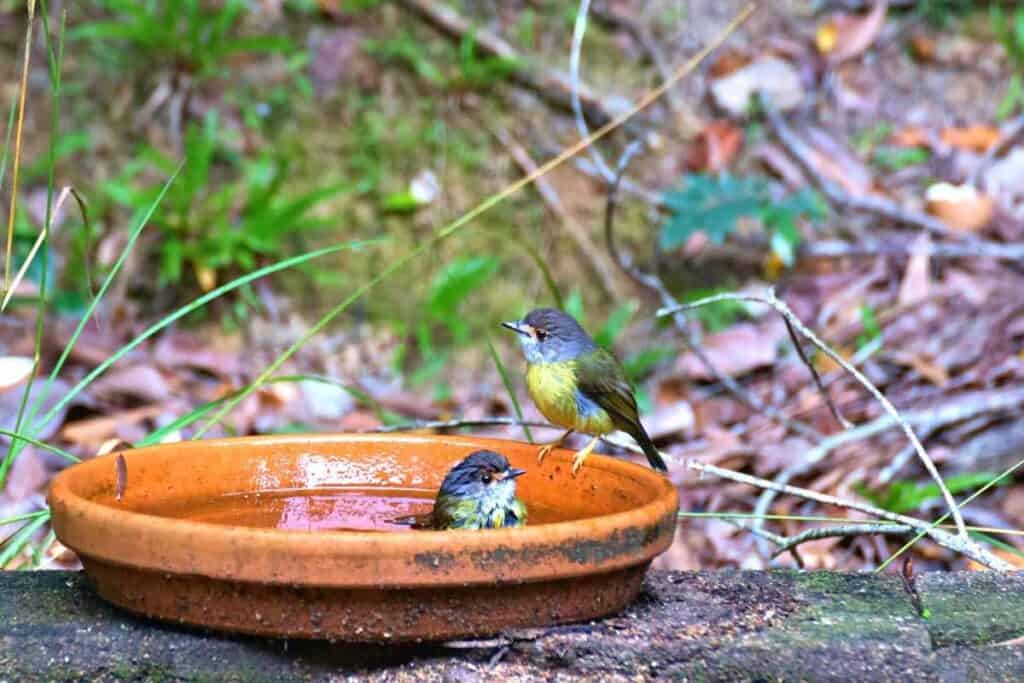
I made a quick summary table for this:
| Bird Bath Height | Size Of Birds Attracted | Examples of Bird Species Attracted |
| Low/ground level- elevation (<1 ft.) | Larger birds and ground feeders | Cardinals, blue jays, robins, blackbirds, thrushes |
| Mid-elevation (2 – 3 ft.) | Both large and small birds | Finches, blue jays, robins, thrushes, cardinals, tits, sparrows, chickadees, blackbirds |
| High-elevation (> 3 ft.) | Small birds | Finches, wrens, chickadees |
Of course, elevating bird baths will invite fewer predators, but in actual fact, bird baths in their natural context are small streams at ground level, where birds will be exposed to natural predators.
So we need to keep them safe!
You may not know this, but different bird species are actually attracted to different bird bath heights.
Backyard birds that are larger in size and ground-feeder birds prefer to use bird baths that are at ground levels, whereas smaller birds prefer higher heights so they are able to spot predators more easily.
This means that if you intend to attract a particular type of bird species, you will need to check out its size, then plan your bird bath height.
2) Elevating A Bird Bath Keeps Cats and Other Predators Away
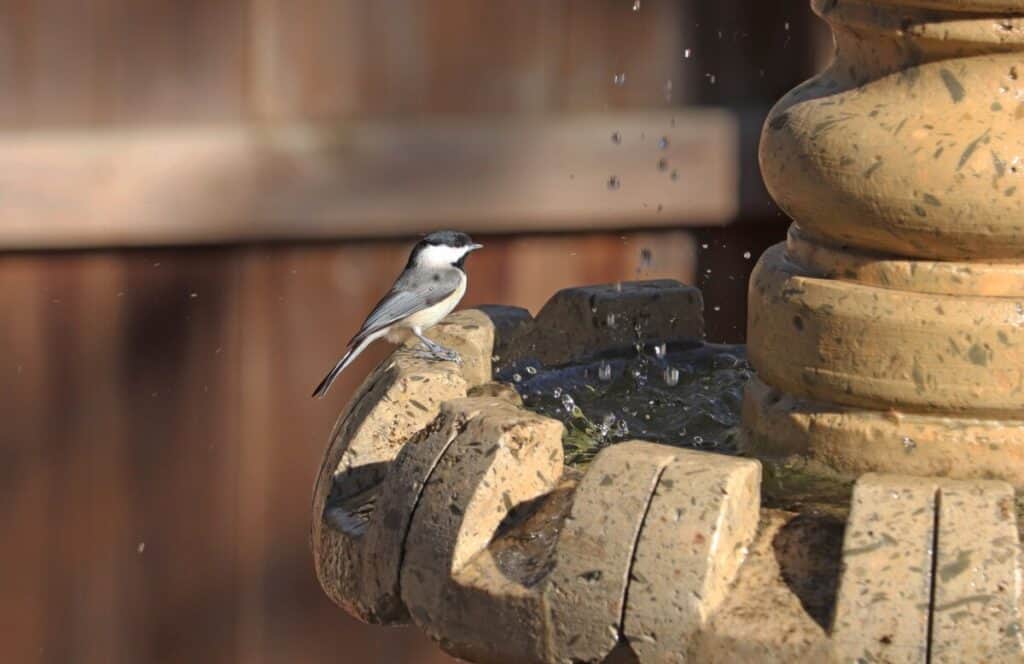
Not elevating your bird bath can be a devastating mistake for new backyard birders trying to set up a bird bath for the first time in their backyard.
This is because a bird bath at the ground level can attract other animals such as home cats, stray cats, and feral cats to the site.
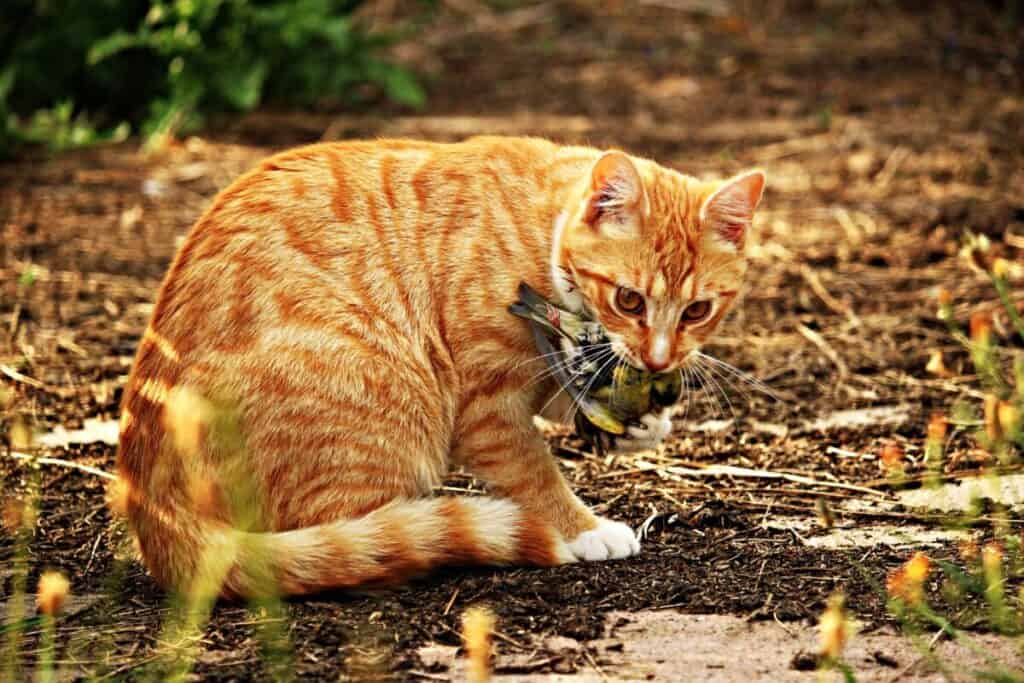
Cats are known to be one of the most notorious creatures that kill birds estimated to be around 30 – 80 million around the world. [1]
In fact, on average, a cat kills two animals per week, according to the Wildlife Society and the American Bird Conservancy in North America.
Moreover, when birds are bathing in a bird bath, they are vulnerable as their wings are wet, and as such, they are not able to escape from predators easily. This makes them an easy target for these backyard predators.
Beyond just predators, placing a bird bath that isn’t elevated also invites critters that can’t climb, to use the bath too.
How High Should Bird Baths Be?
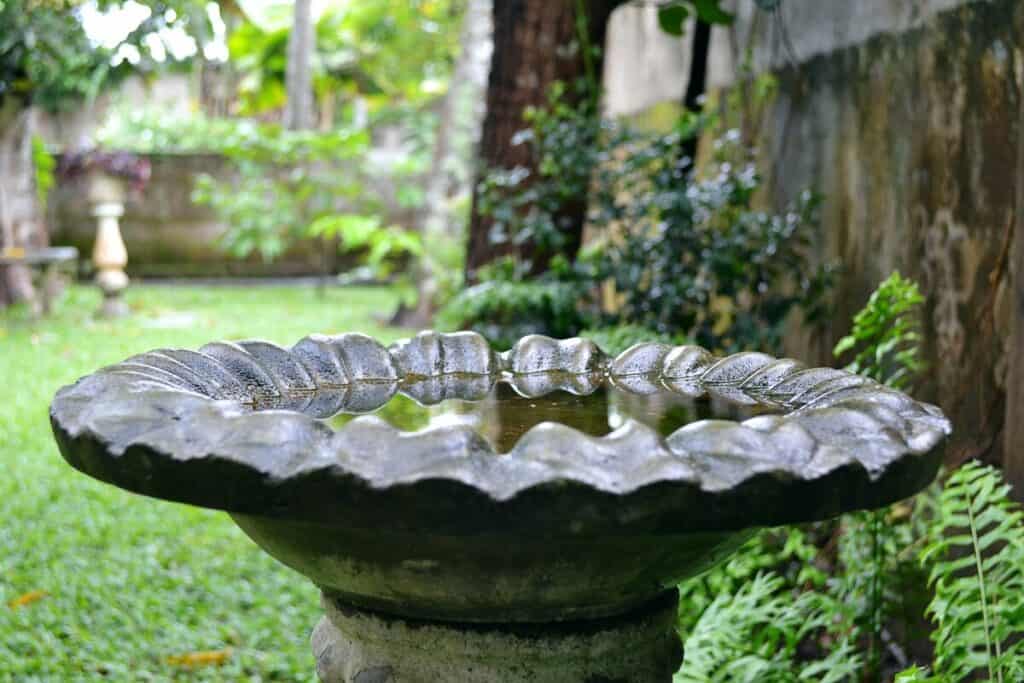
Bird baths should be 2 – 3 feet high above the ground. This bird bath height can attract the most number of birds and with a moderate level of predation. Cats are less likely to reach bird baths of this height. The majority of concrete pedestal bird baths being sold are at the optimal height for a bird bath.
Here’s a quick summary table I made for it:
| Bird Bath Height | Low/ground level- elevation (<1 ft.) | Mid-elevation (2 – 3 ft.) | High-elevation (> 3 ft.) |
| Pros | – Easy to deploy with a simple flat bowl of water – Attracts larger birds – Easy to maintain | – Most pedestal bird baths are of this height – Attracts the most variety of birds | – Less chance of predation |
| Cons | – Higher chance of predation – Can get congested and shared among too many animals | – Moderate level of predation | – Low chance of attracting most bird species – If too high, it can be difficult to reach and maintain |
There’s actually lots of thought that can go into how high bird baths should be. Different bird bath heights can each have their own pros and cons.
Examples of Bird Baths Type and Bird Bath Heights
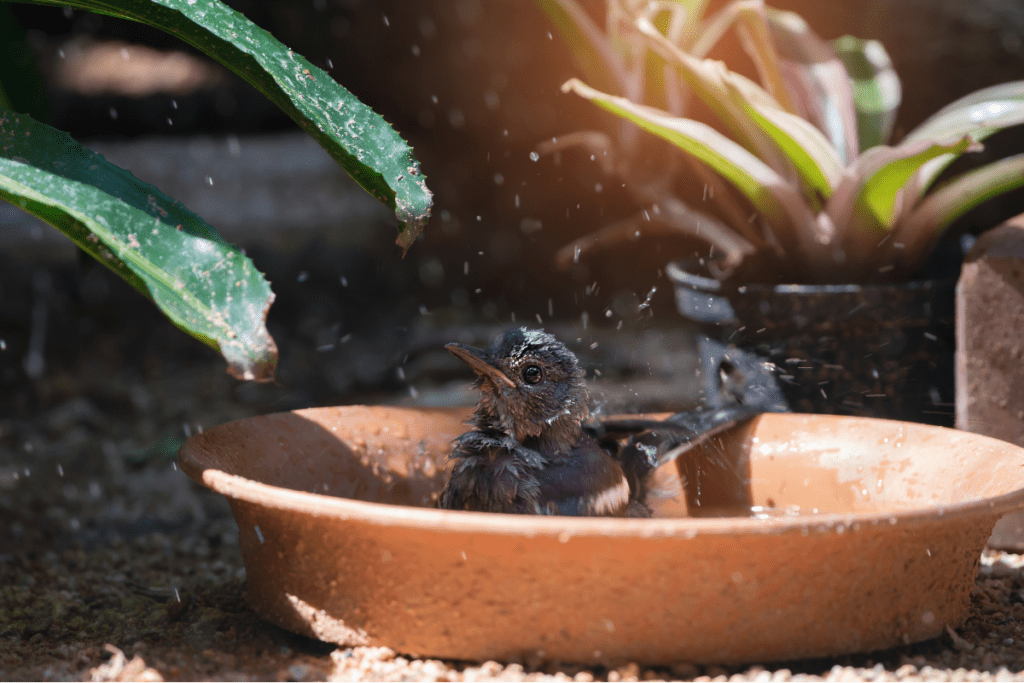
Now that you’re informed on the different bird bath heights and their respective pros and cons, you probably already have a particular bird bath height in mind.
However, if at this stage, you haven’t yet purchased a bird bath, let me run you through some examples of bird baths with respect to their elevation so you attract as many birds as you can!
Here are all the bird bath types, their heights, and their pros and cons:
| Bird Bath Type | Height | Example of Bird Bath (Amazon links) | Pros | Cons |
| Hanging | High-elevation (> 3ft.) | BYER OF MAINE Circles Hanging Bird Bath | – High and away from predators and other animals | – Sways too much in windy places |
| Pedestal | Mid-elevation (2 – 3 ft.) | World Source East Pedestal Bird Bath | – Long-lasting – Most are optimal height – Stable | – Higher costs – Moderate number of predators can access it |
| Staked | Low to Mid-elevation (1 – 3 ft.) | Evergreen Blue Sea Glass Metal Stake Bird Bath | – Aesthetic look – Most are optimal height | – Can be easily toppled over – Moderate number of predators can access it |
| Mounted | Mid to high-elevation (>2 ft.) | Gray Bunny Detachable Mounted Bird Bath | – Stable – Customizable mounting height | – Requires another object/stake to be mounted on |
| Ground | Low/ground level- elevation (<1 ft.) | Wildlife World Ground Bird Bath | – Very stable – Good as water source for multiple animals – Can be made DIY-style | – Birds are be vulnerable to land predators |
Caveat for the above table: I’m going to assume that the height of the bird baths is going to be the same as the elevation that you’re going to place your bird bath at (for pedestal, staked, and ground bird baths).
This means that if you get a pedestal bird bath, it will be placed on the ground, where the height of the bird bath = elevation off the ground.
What Bird Bath Setup I Would Recommend:
After learning about all this information on bird baths, their heights and so on, I’ve come to conclusion for myself and it’s what I recommend to you: Try setting BOTH a ground-level and a pedestal level bird bath if possible!
Here’s how I plan and envision my setup to be like:
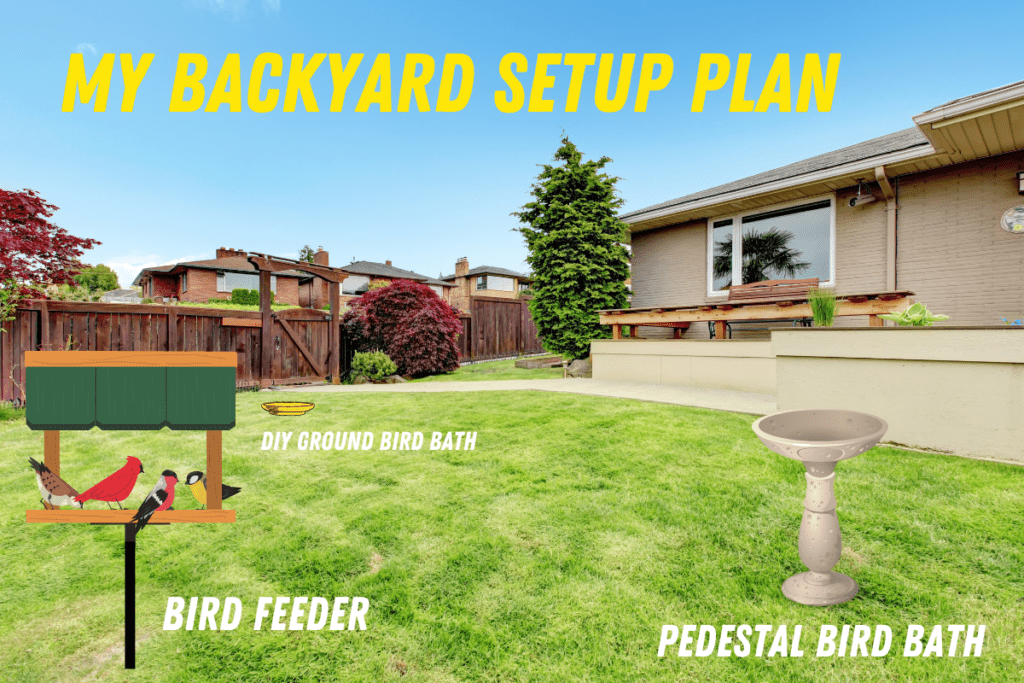
By setting up both in combination, you can allow for land animals, predators, and larger birds to enjoy the water source at the ground level, AND also for smaller birds to enjoy the safer elevation of a pedestal bird bath.
You can do the same by DIY-ing your own ground-level bird bath and purchasing one pedestal bird bath!
What Is The Average Height Of A Bird Bath?
The average height of a bird bath is 2 – 3 feet high above the ground. This bird bath height attracts the most number of birds and with a moderate level of predation. Cats are less likely to reach bird baths of this height. The majority of concrete pedestal bird baths are at the optimal height for a bird bath.
How High Off The Ground Should A Bird Bath Be?
A bird bath should be 2 – 3 feet high off the ground. This bird bath height attracts the most number of birds and with a moderate level of predation. Cats are less likely to reach bird baths of this height. The majority of concrete pedestal bird baths are at the optimal height for a bird bath.
Does A Bird Bath Need To Be Elevated?
Bird baths do need to be elevated at 2 – 3 feet high off the ground. This bird bath height attracts the most number of birds and with a moderate level of predation. Cats are less likely to reach bird baths of this height. The majority of concrete pedestal bird baths are at the optimal height for a bird bath.
Final Thoughts
Hopefully, you would have found the answer to your question on whether bird baths need to be elevated; they do!
However, you need to take into consideration the caveats of doing so and choose what’s best for your situation and budget.
I hope this article has been useful too, as it is was for me when I was researching this topic. Thanks for reading and I wish you success in setting up your bird bath and attracting lots of birds to it. That’s all for today, happy birding!
References
- Loss, S., Will, T. & Marra, P. The impact of free-ranging domestic cats on wildlife of the United States. Nat Commun 4, 1396 (2013). https://doi.org/10.1038/ncomms2380

Justin Chia
Justin is the founder and author of Birding Outdoors. He is a Nanyang Technological University (NTU) alumnus with a Bachelor of Biological Sciences and a former data analyst.
Now, Justin runs the Birding Outdoors blog full-time, hoping to share his deep love for birds, birding, and nature with others.
To unwind, Justin enjoys gaming and reading.

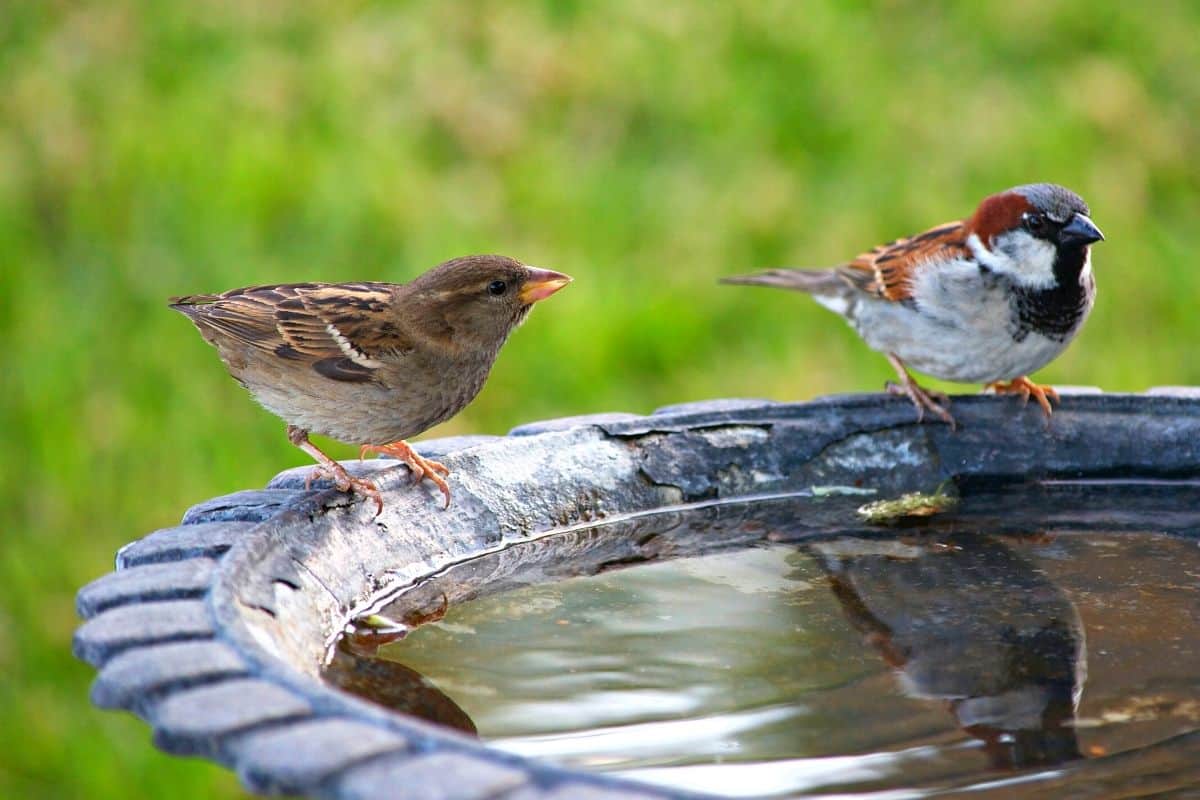
![Do Birds Take Off Into The Wind? [ANSWERED!]](https://birdingoutdoors.com/wp-content/uploads/2020/09/osprey-adler-bird-of-prey-raptor-73825-768x587.jpeg)

![What Is The Appeal of Bird Watching? [ANSWERED!]](https://birdingoutdoors.com/wp-content/uploads/2021/02/eagle-1753002_1920-768x512.jpg)
